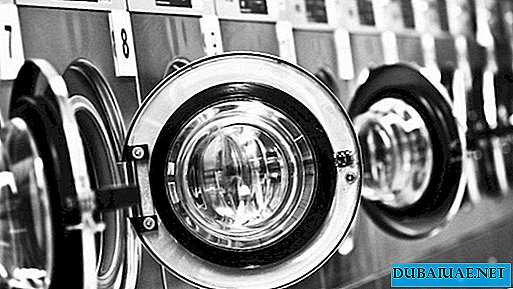LET ME PERFORM A SMALL EXCURSION TO THE HISTORY OF THE ORIGIN OF COLORED JEWELED STONES WHICH ARE ONLY RUBIES, SAPPHIERS AND EMERALDS, AND ALSO TELL ABOUT TODAY.
The most respected in the world are the Swiss certificates Gubelin, GRS, SSEF, along with the American AGL and GIA, which describe all the properties of precious stones. Books that are published by gemological laboratories for each collection item separately are also dedicated to especially valuable colored gemstones! GIA and AGL laboratories are famous for their research and scientific, highly detailed, books on rare stones. Rare and valuable collection stones are given names that go down in history!
Gems are eternal. They are millions of years old, they live the lives of their owners, they are given to loved ones. Because of them, wars began, they covered debts and they were laid in banks.
A striking example of the interesting life of precious stones is the collection of the legendary Hollywood diva Elizabeth Taylor, recently sold at Christie's in New York, where selling prices are 10 times higher than expected. The famous and bright owner of the collection spoke of jewelry in her book “My Affair with Jewels” as follows: “I am happy that I have wonderful jewels. But, I never felt like owning them. I thought that my task was to look after them "Provide them with the best care in the world, make sure they are safe, and love them. And they give me back their love. We enjoy each other."
The actress wrote about the future fate of her jewelry: “They will be scattered across all four cardinal directions. One day someone else will become their owner. I hope that he will treat them with the same love and respect with which I treated them, because genuine beauty is so rare in this world and needs careful admiration. "
Today at MaximiliaN we help you create family collections that will pass from parents to heirs. And now, actually about the stones.
Ruby
“Pigeon blood” or Pigeon's Blood - the name of the rarest shade of ruby was invented by a Swiss gemologist, who noticed the similarity of the color of the stone with the first red drops of blood appearing from the beak of the just killed pigeon.
Among the rubies, the most valuable are stones mined in Burma or Myanmar and having the colors "red" - saturated dark red or "pigeon's blood" - bright and transparent! Almost all natural gemstones have inclusions in the form of air, cracks, "clouds", turbidity, etc. Stones that are not subject to thermal (+ 1200 ° C) and chemical (tinting in boiling oil under pressure) processing are especially valued! Stones that have not undergone performance improvement and are completely natural by nature are called “No heated”, and in the certificates their characteristics are indicated as: “NTE” (“no indication of heating” - no signs of heating or “no indication of thermal treatment” - no signs of heat treatment).
Today, on the world market, prices for natural “unheated” Burmese rubies reach a minimum of US $ 100,000 to 1,200,000 per carat weight.
The average market price for a good Burmese ruby weighing 8 carats (high purity stones and pigeon blood colors) and higher is equal to US $ 500,000 per carat. Therefore, the rings of the world's leading jewelry houses Tiffany, Cartier, Van Cleef & Arpels, Boucheron or Harry Winston can easily cost from 3 to 10 million dollars.
Nearly 90% of rubies circulating today in the High Jewelery business have undergone chemical or thermal treatment. In certificates for such stones, in the “Comments” section, the letter “H” is always modestly, and comments on it are written on the back! Prices for good Burmese rubies with the letter “H” range from US $ 20,000 to 100,000 per carat, and this makes ruby the world's most expensive colored gem.
For particularly rare and important stones, the presence of a book on the stone from the famous laboratory of AGL and GIA, significantly increases the status and cost of the stone!
Sapphire
According to an ancient legend, the throne of King Solomon was decorated with an asterisk - a star sapphire, the rays of which were symbols of faith, hope and love.
Today, Burma, Sri Lanka and Madagascar are the main source of valuable and rare jewelry sapphires. The most valuable and coveted color of blue sapphires is “Royal Blue”. Rare and very valuable are also sapphires of saturated orange color “Padparadscha”, pink sapphires “Pink” and purple “Purple”.
Sapphires are divided into two categories: "heated" (subjected to high temperature processing) and "not heated" (natural).
Prices for "warm" high-quality jewelry sapphires (very beautiful bright color of the stone and the correct cut) range from US $ 10,000 to 50,000 per carat. Prices for "unheated" stones range from US $ 20,000 to 100,000 per carat. "Unheated" stones always have inclusions, cracks, "clouds" and turbidity, but they are completely natural.
The most expensive on Earth are sapphires of delicate cornflower blue color from the province of Kashmir, which is located between Pakistan and India. These sapphires can only be antique, since the mines have long been exhausted, and stone mining is not carried out due to the constantly smoldering war in the province. The most famous Kashmir sapphires at Sotheby's and Christies auctions, such jewelry houses as Cartier, Graff and Harry Winston buy at US $ 200,000-300,000 per carat and produce luxurious modern jewelry from them.
Emerald
Emerald (from the Greek “esmeragdos” - “green stone”) symbolizes cosmic energy, inner strength and peace of mind. The most valuable on Earth today are Colombian emeralds! Often customers talk about them “with butter” and “without butter” without understanding the essence of the matter. Let's figure it out.
Emerald is corundum, and according to the Moss hardness table, its hardness is 7.5-8 units (for comparison, a diamond has 10, a sapphire 8.5, and a ruby 8.2). In other words, an emerald is the “softest” of the four gems, and in its structure you can always find a plentiful amount of inclusions, cracks, chips. This is normal, and suggests that the stone is natural and mined from natural deposits! To improve the external state of the stone, all these cracks are filled in a special small chamber with rapeseed or palm oil, heated to a temperature of no more than + 90 ° С. Such processing allows you to improve the appearance of the stone, and since the oil dries inside the cracks, the appearance of the emerald becomes brighter and more solid. You should also know that the oil is recommended by gemological laboratories and an acceptable way to improve the species characteristics of emeralds! But tinting emeralds with artificial dyes is strictly prohibited.
Stones that do not have inclusions are absolutely transparent and do not have oil inside - these are antique and rare emeralds. Once upon a time, 100-200 years ago, people could afford to spend up to 70-80% of raw materials to get the perfect stone at the exit! Only such emeralds are called by jewelers “No oil”.
Today, oil-refined emeralds reach US $ 20,000-60,000 per carat, and all jewelry houses in the world use such stones (up to 99% on the market). In the jewelry of the great jewelry houses with rare (antique) emeralds absolutely without oil and without inclusions, prices reach US $ 100,000-200,000, and sometimes US $ 300,000 per carat











